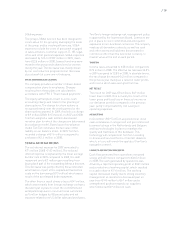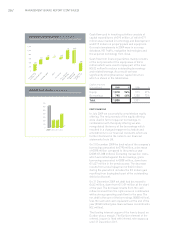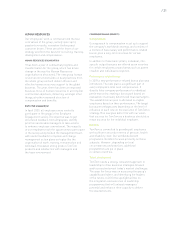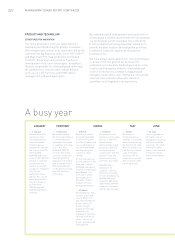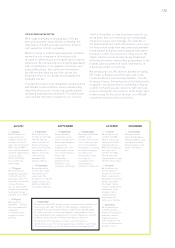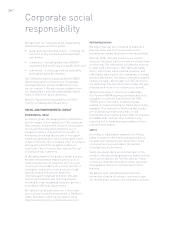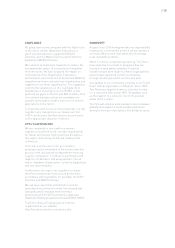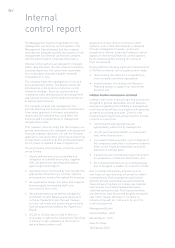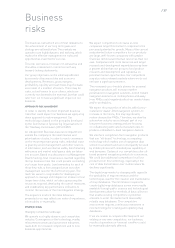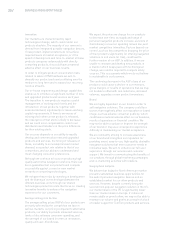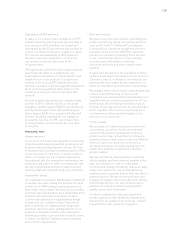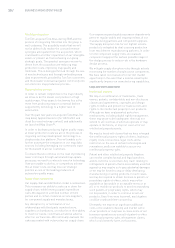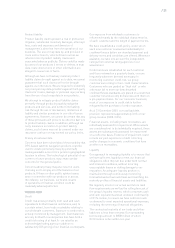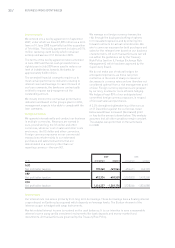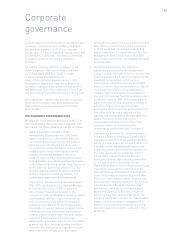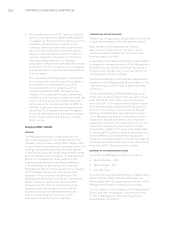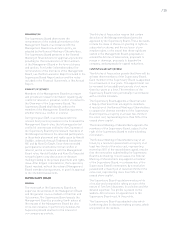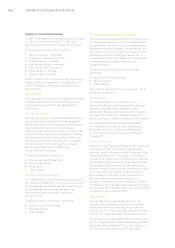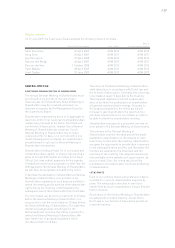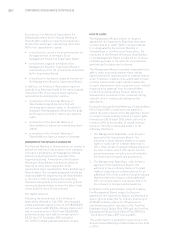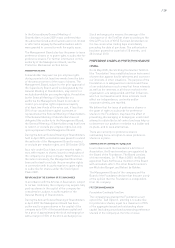TomTom 2009 Annual Report Download - page 31
Download and view the complete annual report
Please find page 31 of the 2009 TomTom annual report below. You can navigate through the pages in the report by either clicking on the pages listed below, or by using the keyword search tool below to find specific information within the annual report./ 29
Dependency on GPS satellites
In many of our product lines, we depend on GPS
satellite transmissions to provide position data to
our customers. GPS satellites are funded and
maintained by the US government and we have no
control over their maintenance, support or repair.
The free use and availability of GPS signals to
the level of accuracy required for commercial
use remains at the sole discretion of the
US government.
GPS signals are carried on radio frequency bands
specifically allocated on a global basis. Any
reallocation or interference of these bands could
impair the use of our products. If a significant
number of the existing GPS satellites become
obsolete, unusable or are not upgraded as planned,
there could be a significant deterioration in the
reliability, accuracy or utility of the entire GPS
network.
A future possible alternative and complementary
solution to GPS is Galileo. Galileo is the global
navigation satellite system (GNSS) currently being
built by the European Union (EU) and European
Space Agency (ESA). Once completed Galileo will
become the global standard for civil navigation
by satellite. Like the US GPS, use of basic (low-
accuracy) Galileo services will be free and open
to everyone.
OPERATIONAL RISKS
Human resources
The success of our business depends on attracting,
integrating and retaining qualified personnel in all
business units and development centres. The loss
of key personal could have a material adverse effect
on our business. Furthermore, if we are unable to
retain or increase our pool of talented people to
keep abreast with the competitive environment our
business could suffer. In order to mitigate this risk
we have implemented policies for attracting and
retaining staff, which include long term incentives.
Organisation design
Our organisation has grown significantly in headcount
in the past five years, taking into account the rapid
growth of our PND business and acquisitions we
have made, most notably Tele Atlas. As our product
lines have diversified and we have established more
business units and revenue streams, we have
continuously adjusted our organisational design
to best meet our customer needs. If we are not
able to optimise our organisational design and
stimulate rapid innovation and deployment of our
products in desirable markets, this may lead to
market opportunity costs and loss of market share,
or impair our ability to address market demands
and customer expectations.
Real-time services
We have moved into new markets, diversifying our
product portfolio by rolling out realtime products
such as HD Traffic™, IQ Routes™ and dynamic
routing and our connected navigation solution to
business clients (TomTom WORK) in a growing
number of countries. In providing these services
to our customers we rely on our own, as well
as outsourced, information technology,
telecommunications and other infrastructure
systems.
A significant disruption to the availability of these
systems could cause interruptions to our service to
customers, loss of, or delays in, our research and
development work and/or product shipments, or
affect our distributor and consumer relationships.
We mitigate these risks through continuity planning
and are constantly striving to improve and
strengthen our internal systems and infrastructure.
Together with our outsourced partners for ICT we
have backup and continuity procedures in place,
however, these may not function as intended when,
and if, required. This could cause a disruption to
our business activities and interruption of our
services to our customers.
Product quality
We are subject to risks resulting from defects in
our products, as well as returns and warranty
expenses. We develop hardware and software
products which may contain defects in design or
manufacturing or other errors or failures. Material
defects in any of our products could result in
decreasing revenues, increased operating costs
and/or the possibility of significant consumer
product liability.
We have introduced extensive failure mode and
effects analysis and finite element analysis at the
start of all projects in order to understand,
minimise and manage the design risks at an early
stage. This reduces the risk of manufacturing,
hardware and component defects after the start of
mass production. We set out the guidelines and
manage the quality control procedures for testing
and manufacturing to our specifications and in
addition our contract manufacturers perform
quality control tests themselves.
In order to mitigate the risks associated with
product quality, we have dedicated departments
that monitor the quality of our products, contract
manufacturers and component suppliers.


